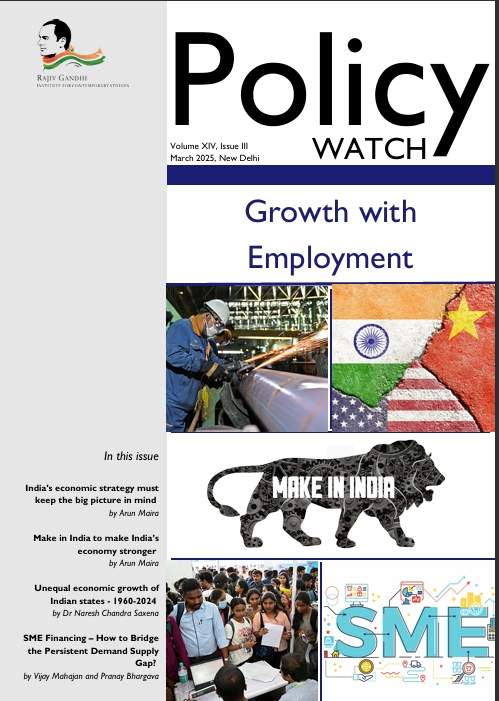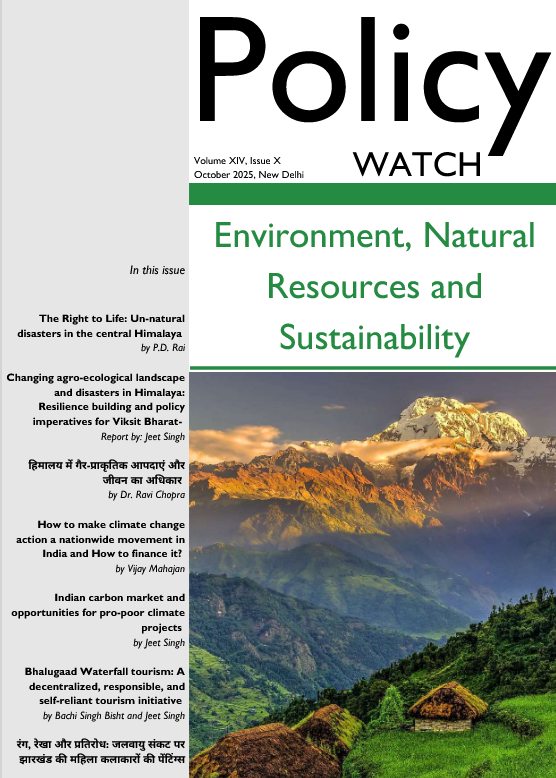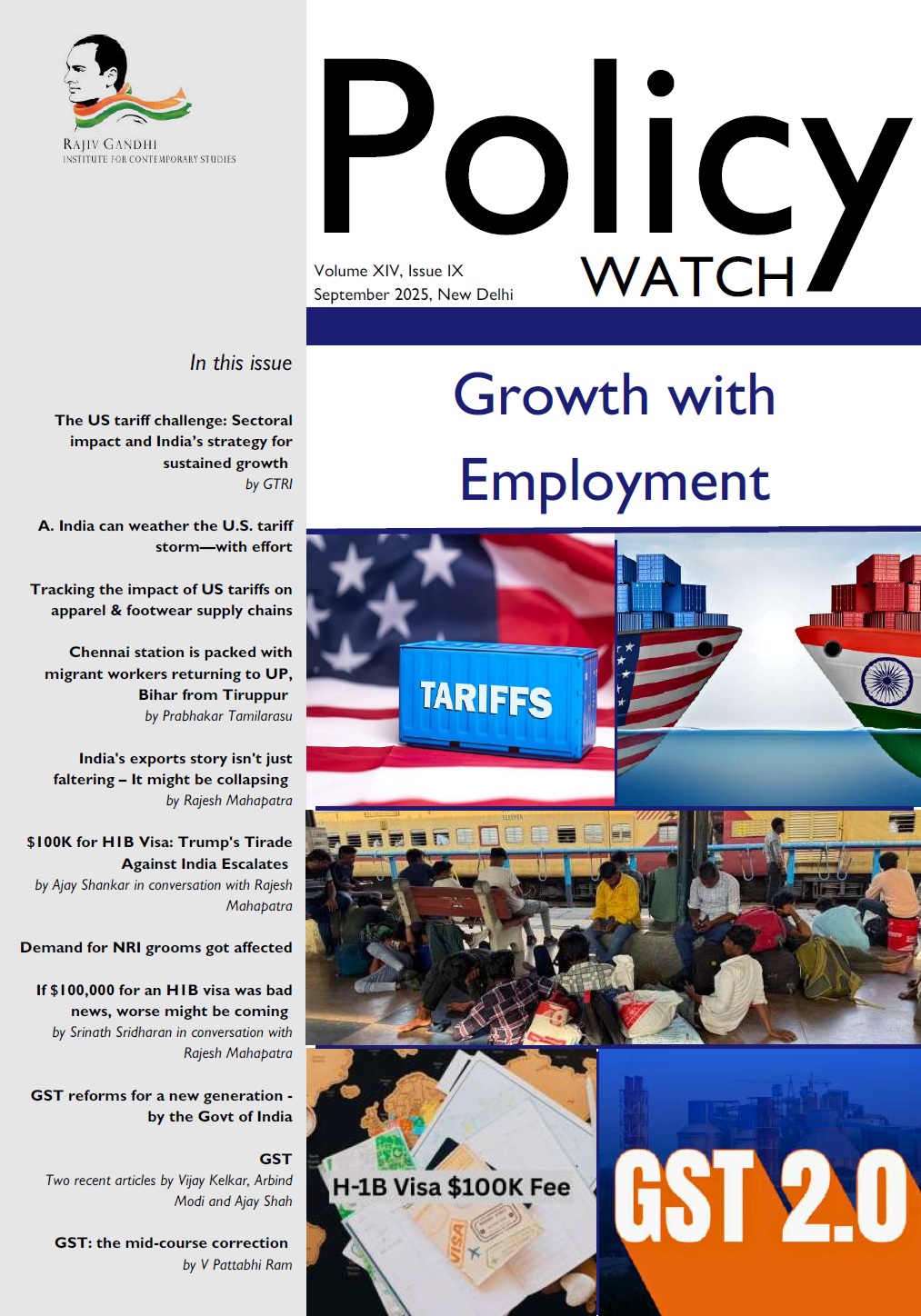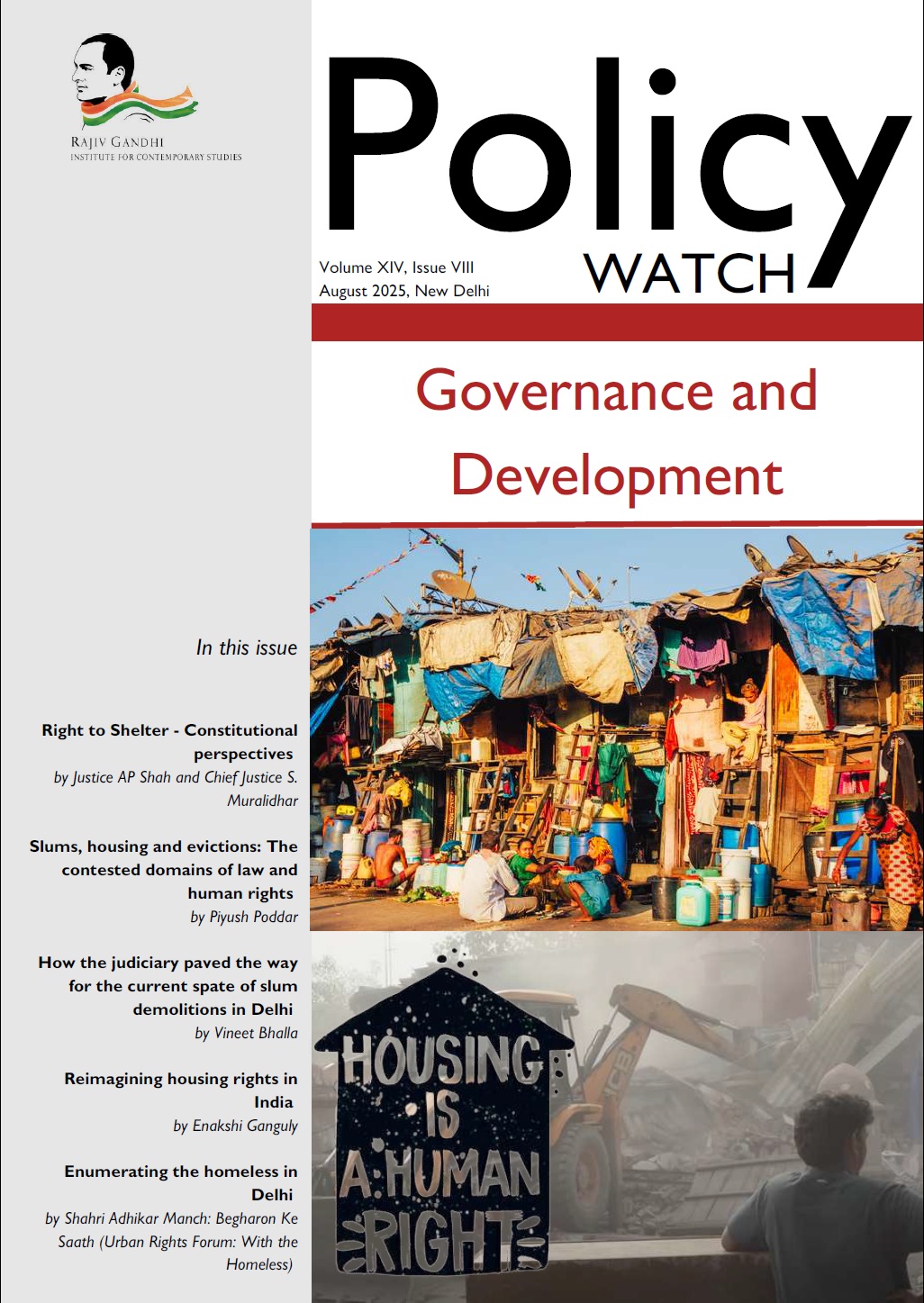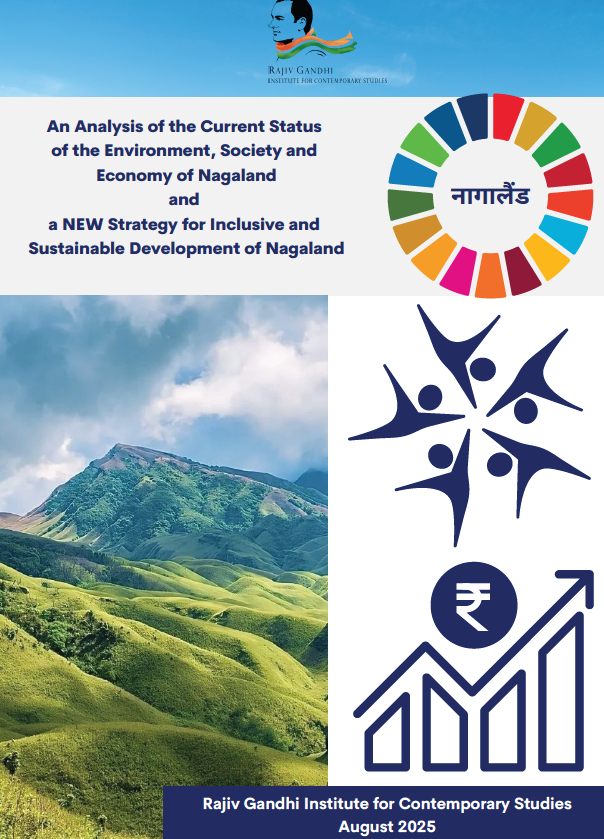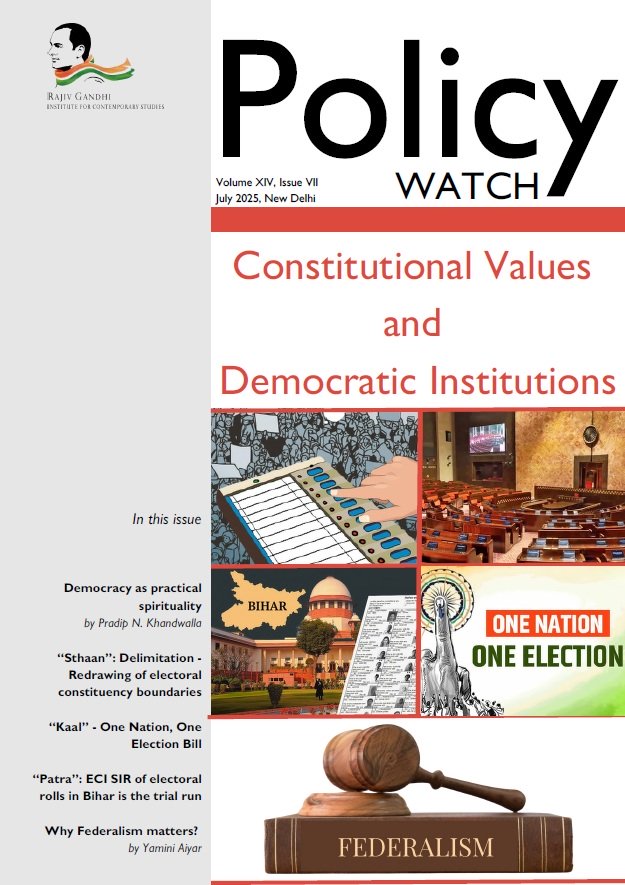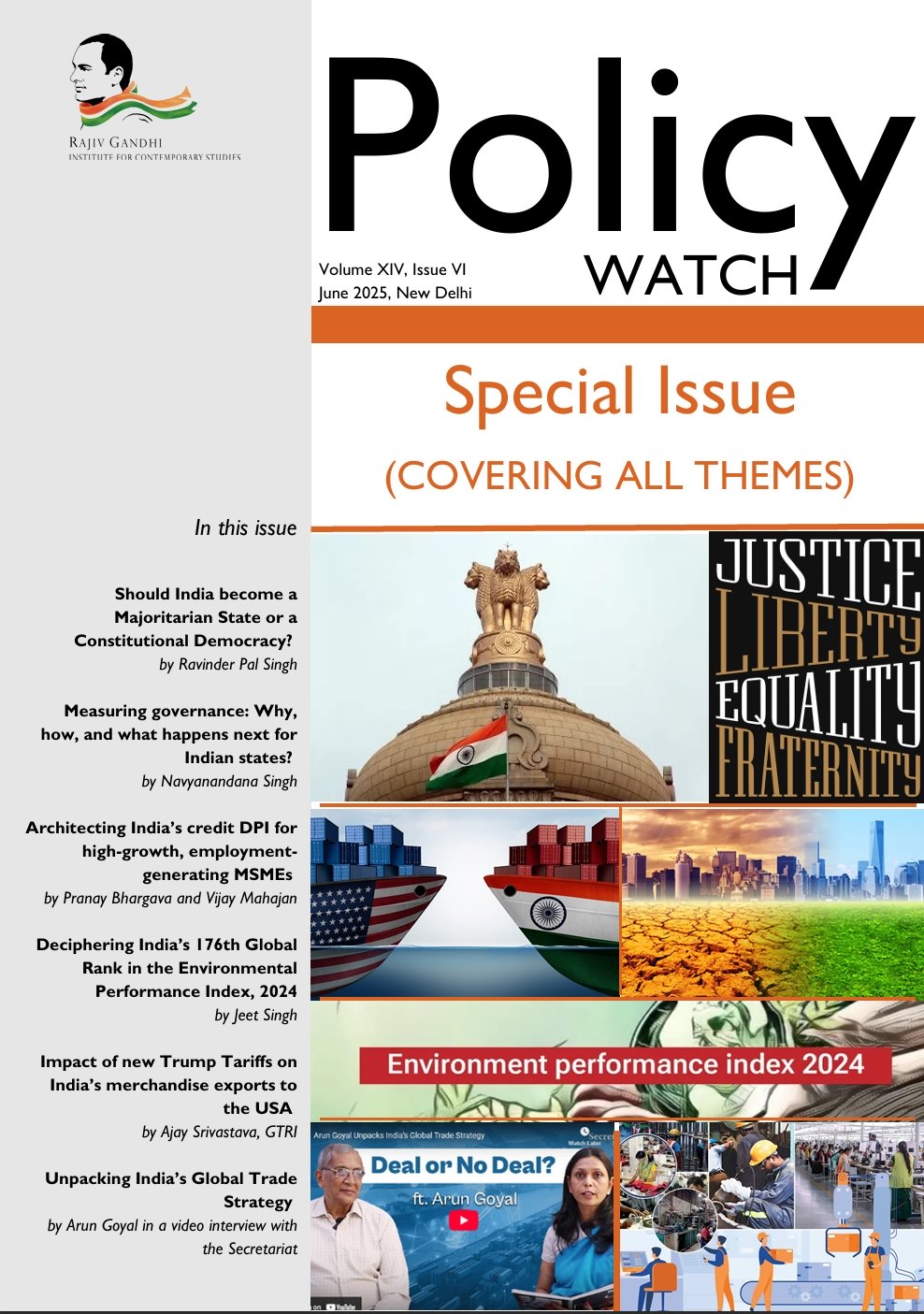This issue of Policy Watch deals with the theme Growth with Employment. We carry three articles, two focussing on the future of the Indian economy, given the huge uncertainties caused by the Trump Tariffs and even as we are grappling with those, the news that India has registered a record USD 100 billion trade deficit with China. The third article is about inter-state inequality and how it militates against productivity growth and job creation in the poorer states. This is now probably one of the biggest policy challenges facing India.
The very first article is by Arun Maira, who served on India’s Planning Commission after a long career in the private sector, mostly in consulting. His new book ‘Reimagining India’s Economy: The Road to a More Equitable Society’ is about to be launched in May 2025.
Arun Maira argues that India’s negotiators must be guided by a long-term strategy to build depth in India’s own industrial capabilities, which have lagged far behind China. He advises “The US and China are India’s largest trading partners… Whereas India runs a large trade deficit with China, it has a merchandise surplus with the US, which is also India’s largest market for software services. New Delhi must tread carefully not to annoy either the US or China… it has become imperative for us to create our own industrial capabilities, regardless of any US pressure to abandon Make in India.” In a companion piece, he advises us that the history of Japan’s and China’s industrial growth must guide us. “Japan built its industries strategically after the Second World War. Industry and trade policies were coordinated by MITI (Ministry of International Trade and Industry, in collaboration with Japan’s industry builders. By 1990 Japan had become the factory of the world for a range of manufactured products—automobiles, electronic products, precision machinery, etc.”
We reproduce a major piece of work by Dr NC Saxena, a distinguished civil servant and development thinker who is also a Distinguished Fellow of the Skoch Foundation a policy think tank that recently conducted its 100th Summit. We are publishing this article with the kind concurrence of Skoch Foundation.
Dr Saxena make the point that wealth created by sustained high rates of growth in India remains unevenly distributed at macro-level as well as in terms of significant inter-state regional disparities. Low growth rates in poorer states have further widened the disparity in the provision of public services. The polarisation has divided the country into two distinct groups of rich states and poor states. The goal of equitable economic development is to enable income levels of poorer states to reach the levels of the richer states. For this, the incomes of poorer states must grow faster than those of the rich for a long time. Poorer states have weak capacity for the delivery machinery because of which basic public services, such as primary education and public health care suffer a great deal. Dr Saxena makes a strong case for allocations of the consolidated fund of India to states on the basis of population as well as poverty considerations. Based on the observation that fertility rates come down with improved education and health, which require public spending by the states, he asserts “If poorer states are denied funds for education and health, and then be punished for not controlling their population, it would become a vicious cycle leading to a spiraling growth in inter-state inequality.” He concludes that inter-state inequality is not only detrimental to poverty reduction, but also to economic growth.
The issue of inequality is a concern of humanity and well-being, including the right of people to have a life of dignity and access to basic goods and services. Inequality has a negative impact on social cohesion and on the quality of institutions. “Given that in the long-run, efficiency and greater equity are complementary, governments should take appropriate measures to ensure that the reduction in inequality and disparities in life chances are accorded greater prominence in the design of development policies and strategies.”
The fourth article is by the undersigned, jointly with Pranay Bhagava a finance and livelihoods specialist. In this article we begin by reiterating that employment in India will largely come from the non-farm MSME sector. As data from the Annual Survey of Unincorporated Sector Enterprises shows a vast majority of MSMEs are 6.5 crore “own account enterprises” which can barely create subsistence self-employment. The main source of additional employment is the roughly one crore Hired Worker Enterprises. However these HWEs suffer from access to finance both for start up and growth. This paper offers some solutions based on a pilot project that both the authors have been involved with.
Policy Watch: Growth with Employment – March 2025
Send download link to:

